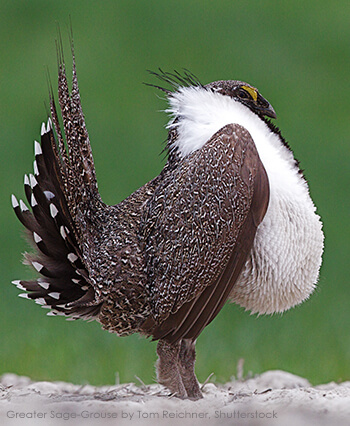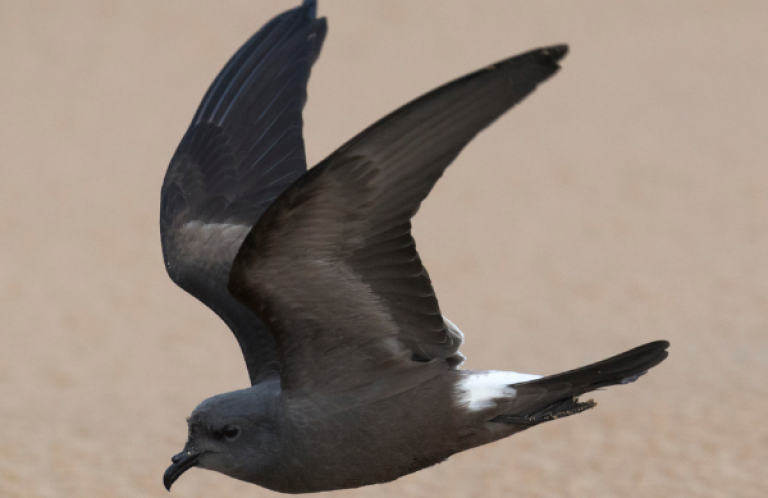Conservation Groups Call for National Planning Effort by Feds on Wind Energy
 |
(Washington, D.C., April 24, 2014) A coalition of more than 70 conservation organizations has requested the U.S. Department of the Interior (DOI) develop a National Programmatic Wind Environmental Impact Statement (EIS) to identify appropriate areas for wind energy development as well as areas where new projects should be avoided to conserve wildlife and sensitive habitats.
The request to DOI came in the form of an April 23, 2014, letter to DOI Sally Secretary Jewell.
“A national, Wind Energy EIS is entirely consistent with your recently-released strategy for improving landscape level planning and mitigation for future development on public lands (Improving Mitigation Policies and Practices of the Department of Interior). Wind energy, and indeed all forms of energy development have the potential to cause significant harm to wildlife if improperly sited and managed,” the letter said.
Recent peer-reviewed articles have documented significant losses of birds and bats, including threatened, endangered, and other protected species—an estimated 573,000 birds and 888,000 bats annually at 2012 build-out levels. The number of birds taken annually by wind energy facilities could exceed 1.4 million by 2030 if there is no change in U.S. policy toward wind energy development. There are also significant habitat impacts to candidate species for the Endangered Species Act (ESA), such as the Greater Sage-Grouse, associated with wind energy development.
According to the letter, “Combined with other major human impacts on bird populations, including feral cats, pesticides and collisions, this could continue the downward trend we are currently seeing in even our most common species.”
The groups are supportive of renewable energy as a way to address anthropogenic climate change, but only if it addresses wildlife and habitat impacts. In particular, this means appropriate pre-construction assessments of risk leading to proper siting, post-construction mitigation, and independent monitoring of fatalities, as well as compensation if and when public trust resources are being taken.
“The signatories to this letter believe that birds and other native wildlife are important to Americans and that every precaution should be taken to minimize fatalities due to for-profit energy development,” said Dr. Michael Hutchins, National Coordinator of ABC's Bird Smart Wind Energy Campaign. “This process would identify those areas where wind should not be developed, but would not preclude the need to conduct site-specific risk assessments for wind projects outside those areas,” Hutchins stated.
“When it comes to wind energy, siting is everything. Indeed, we believe that much of this conflict [over bird and bat mortality] could be averted by a National Wind Energy EIS, which would determine where wind energy should be developed and where it should not,” Hutchins said.
In addition to the threat of collision with turbine blades, power lines associated with wind energy development also pose a collision threat for species such as the endangered Whooping Crane and other large birds.
The groups agree that siting wind energy turbines in certain areas—such as major bird migration routes; in or near critical breeding habitat; and in or near other sensitive areas such as wetlands, wildlife refuges, and parks; and in priority Greater Sage-Grouse habitat—poses far too great a risk to public trust resources, including federally protected birds and bats. ABC and other organizations have created maps to help guide wind energy siting decisions. Newly developed information from the U.S. Geological Survey is also recommended for incorporation into the planning process, especially with regard to accurately assessing cumulative impacts of energy and other forms of development.
There is precedence for an EIS such as the one requested by the coalition of groups. ABC officials met recently with representatives of the Bureau of Land Management (BLM) who have conducted a planning effort for solar energy on public lands in the West, identifying areas where solar energy can be developed versus where it should not. They are further considering how to factor in cumulative impacts from other development (e.g., oil and gas) into their decision-making processes. Depending on how effectively this process is implemented, it could potentially provide a model for wind energy development as well, the groups say.
In 2009, 22,000 turbines were in operation, representing 25 gigawatts (GW) of installed capacity, a fraction of the 300GW of production capacity needed to meet the 2030 federal goal of 20 percent of U.S. electrical generation coming from renewable energy. Wind farms are also expected to impact almost 20,000 square miles of terrestrial habitat (larger than the combined areas of New Jersey, Connecticut, Delaware, and Rhode Island) and over 4,000 square miles of marine habitat by 2030, some of this critical to threatened species. ABC's efforts to establish Bird Smart wind energy in the U.S. are made possible in part by the generous support of the Leon Levy Foundation.


















































